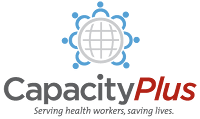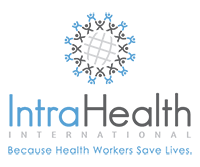Information System Development
Assessments of Health Services Availability in Humanitarian Emergencies: A Review of Assessments in Haiti and Sudan Using a Health Systems Approach
To improve the consistency of health facilities assessments, the World Health Organization has proposed the use of the Health Resources Availability Mapping System (HeRAMS) developed in Darfur, Sudan as a standardized assessment tool for use in future acute and protracted crises.This study provides an evaluation of HeRAMS’ comprehensiveness, and investigates the methods, quality and comprehensiveness of health facilities data and tools in Haiti, where HeRAMS was not used.
- 1045 reads
Building Locally Relevant Models for Universal Health Coverage and its Implications for Health Information Systems: Some Reflections from India
This paper speaks to this agenda, and describes an ongoing pilot study from the state of Punjab in India with a focus on the implications of UHC models on HIS. Five key implications on HIS are identified: Expanding basket of services; Population basing of services; Ensuring continuity of care; Resource allocation choices; Monitoring financial protection and costs of care. [from abstract]
- 779 reads
Developing a National E-Health Strategy for DR Congo: A Preliminary Analysis of Business Needs, Existing Information Systems and Solutions
A first part of the study consisted of a detailed analysis of regulatory documents and strategic plans related to the Congolese health system and health informatics development. In a second part, field visits and semi-structured interviews were organized with a representative sample of relevant health structures throughout the country. [from abstract]
- 575 reads
Taking mHealth Solutions to Scale: Enabling Environments and Successful Implementation
The following case study offers a look at some of these basic ingredients and approaches that can help to achieve both scale and sustainability in the African context. We focus in particular on how closing persistent gaps increases the likelihood of mainstreaming mHealth initiatives into health systems. [from introduction]
- 757 reads
Design and Implementation of a Health Management Information System in Malawi: Issues, Innovations and Results
As in many developing countries, lack of reliable data and grossly inadequate appreciation and use of available information in planning and management of health services were two main weaknesses of the health information systems in Malawi. As a first step towards conceptualization and design of the system, a minimum set of indicators was identified and a strategy was formulated for establishing a system in the country. [from abstract]
- 858 reads
An Interactive Mobile Messaging System for Patients and Health Workers
In this paper, the authors discuss a mobile interactive messaging system that would enable patients to send preliminary symptoms to the health workers in public hospitals via SMS. The information gathered is stored in database residing at the health facility, which will serve as a reference point to the health workers whenever responding to the messages received from patients. [from abstract]
- 529 reads
ICT Knowledge, Utilization and Perception Among Healthcare Providers at National Hospital Abuja, Nigeria
This study deployed a cross-sectional structured questionnaire to determine ICT knowledge and utilization among healthcare providers at National Hospital Abuja. [from abstract]
- 9842 reads
The Health Workforce Information Ecosystem: Strengthening Connections between Health Workforce Information Domains and e/mHealth Technologies
Presented at the GETHealth Summit in Dublin, Ireland (November 13–14, 2014), this poster describes work to develop a new data exchange standard, Care Services Discovery. This technology is open and collaborative, available for support by a wide variety of technologies, including iHRIS, DHIS 2, and UNICEF’s RapidPro platform. Open source technologies and open standards approaches make a formidable combination to address information needs. [from introduction]
- 426 reads
Getting Healthier Around the World: Information and Communication Technologies for Child Health and Development
To celebrate Universal Children’s Day 2013, this report was commissioned by Sesame Workshop to achieve two objectives: (1) to explore current and future opportunities in the use of mobile phones and other relevant information and communications technologies (ICTs) for improving the health and development of young children as investments for a better future, and (2) to provide guidance and recommendations for partnerships, institutions or organizations interested in contributing to this field. [from executive summary]
- 511 reads
District Health Management Information System (DHMIS) Standard Operating Procedures: Provincial Level
These Standard Operating Procedures aim to clarify the responsibilities and procedures for effective management of aggregated routine health services. These SOPs for provinces present basic and practical steps to be followed by
provincial health information management personnel, programme/line managers and clinic supervisors at provincial level to ensure that data is appropriately handled and used to improve service delivery at local level, prior
to submission to next level of the health system, within the specified time frames.
- 1686 reads
District Health Management Information System (DHMIS) Standard Operating Procedures: National Level
These Standard Operating Procedures aim to clarify the responsibilities and procedures for effective management of aggregated routine health services. These SOPs for the National DoH present basic and practical steps to be
followed by national health information management personnel, programme/line managers and clinic supervisors at national level to ensure that data is appropriately handled and used to improve service delivery at local level, prior
to submission to next level of the health system, within the specified time frames.
- 1544 reads
An Action Research Study: Introducing ICT's in Developing Countries
We explore the current status of this area in the research community. E-health gives us an introduction to why we are trying to introduce information and communication technology’s (ICT’s) in order to improve health care. [adapted from abstract]
- 318 reads
Human Resources Information Systems (HRIS): A Review across States of India
India faces critical human resources shortages for key cadres such as doctors, specialists, nurses, and midwives. Other key challenges include suboptimal deployment of staff exacerbated by a skewed urban-rural distribution, gaps in certain specialties, and inefficient use of staff due to poor rationalization of tasks. Lack of comprehensive, reliable, and up-to-date data and an absence of commonly agreed definitions and analytical tools make the task of managing the health workforce more difficult.
- 688 reads
eLearning Africa: 2014 Post-Conference Report
The official report for the 9th International Conference on ICT for Development, Education & Training, which took place from May 28 to 30, 2014 in Kampala, Uganda. [adapted from publisher]
- 487 reads
Preparedness for e-Health in developing countries: the case of Ghana
This paper reports on a literature review as part of a research program, which aims to inform the development of an effective roadmap for the successful implementation of the national e-Health initiative in Ghana. [from abstract]
- 705 reads
Assessment of Health Management Information System (HMIS) Performance in SNNPR, Ethiopia
This document reports on the assessment findings that serve as a basis for formulating interventions to improve the HMIS performance and as a baseline for future monitoring of HMIS performance improvement in the zones. Additionally, lessons learned from this assessment will further inform needed modifications and/or adaptations of the HMIS performance assessment tools to be used for assessments in the remaining zones of SNNPR. [from introduction]
- 1676 reads
A Spatial Conceptual Data Model For Public Health In Nigeria
This paper proposed a well organised conceptual public health data model for Nigeria,
which addresses all the health problems and their causes. The proposed data model could be used to develop any health related system such as national public health database system, and disease surveillance system, which we intend to develop from this, proposed data model. [adapted from abstract]
- 3364 reads
Nurses' Knowledge, Practices, and Barriers in Care of Patients with Pressure Ulcers in a Ugandan Teaching Hospital
The purpose of this study was to determine the nurses’ knowledge and practices regarding risk factors, prevention, and management of pressure ulcers at a teaching hospital in Uganda. The study employed a descriptive cross-sectional design. [from abstract]
- 1533 reads
mHealth Support Tools for Improving the Performance of Frontline Health Workers: An Inventory and Analytical Review
This report outlines the findings from a three-pronged approach that includes: 1. Establishing a database of existing mHealth tools related to FLHW performance and accountability; 2. Conducting a literature review on the evidence
base of using mHealth tools to improve FLHW performance and accountability; 3. Developing a framework to guide the adaptation of paper-based content into mobile-friendly content. [from summary]
- 780 reads
Health Human Resources Minimum Data Set Guide: Text File Format
This guide was developed to assist organizations in developing health human resources databases that are consistent with national standards and that provide opportunities to make comparisons between jurisdictions and professions. The guide is not intended to provide the steps to build a database; rather, it introduces the standards to be used for collecting, processing and reporting health human resources data. [from introduction]
- 1268 reads
Using Organizational Development Approaches to Strengthen Health Information Systems
This concept paper summarizes an approach based on the principles of organizational development that is aimed at complementing health information systems (HIS) strengthening efforts to make them more effective. [from summary]
- 3067 reads
Challenges of Sustainability of Health Information Systems in Developing Countries: Comparative Case Studies of Mozambique and Tanzania
Given that IT projects may take a long time to be fully institutionalized, sufficient resources are required to build the local capacity to support and sustain the project after the withdrawal of donors. Inadequate donor support often contributes to weakening rather than strengthening human resource capacity and effective system design, since it emphasizes the technology itself at the expense of the needs of the users. These factors contribute to the design and implemntation of unsustainable health information systems in developing countries. [from abstract]
- 4317 reads
Case for a National Health Information System Architecture; a Missing Link to Guiding National Development and Implementation
Developing countries and the global network of donors, programs and NGOs agree that health systems need to become stronger if gains in health are to be achieved and sustained. A major factor contributing to this current situation is that the excessive burden of data collection falls to health workers. A national health information system capable of supporting day-to-day management, long-term planning, and policy development for the entire national health system is required. [adapted from abstract]
- 4262 reads
Guidance for the Health Information Systems (HIS) Strategic Planning Process: Steps, Tools and Templates for HIS Systems Design and Strategic Planning
This document is an early version of procedures for use by national health and statistics constituencies in planning and carrying out the design of strategies and operational plans for strengthening their national health information systems. [from summary]
- 5121 reads
Data Demand and Information Use in the Health Sector: A Conceptual Framework
This publication provides a framework for health and information professionals, as well as stakeholders, for improving the use of information to guide policymaking, program design, management, and service provision in the health sector in developing countries. [adapted from introduction]
- 3450 reads
Data Quality Considerations in Human Resources Information Systems (HRIS) Strengthening
This brief will discuss the concepts of data quality and provide examples of the importance of data management specific to the field of HRH, illustrated by the Capacity Project’s experience with HRIS strengthening in developing countries. [from introduction]
- 7930 reads
Building HR Information Systems: Leading the Way Together in Uganda
To help build the health workforce, the Capacity Project assisted Uganda’s Ministry of Health to craft and implement a comprehensive agenda for human resources for health… Improved human resources information systems (HRIS) will help the Ministry to plan for recruitment, training and retention of health professionals. [from author]
- 2587 reads
Developing Health Management Information Systems: a Practical Guide for Developing Countries
This Manual is designed to be a quick-and-easy, user-friendly reference for the development of health management information systems (HMIS), with the focus on applications. It serves as a primer on HMIS development and provides a general overview of the basic principles, as well as the fundamental steps and issues involved in the different activities to be undertaken. It aims simply to provide the basic elements on HMIS development for people who do not have the time or the need to read deeply on the subject.
- 5306 reads
Toolkits for Strengthening Primary Health Care
In Albania, the PHRplus Project developed and tested a series of tools designed to introduce family medicine concepts and strengthen primary health care (PHC) services. PHC facility managers will find the toolkits useful reference materials when developing strategies and tools to improve quality of care and monitor and evaluate PHC strengthening efforts. This series comprises three toolkits: PHC Service Delivery Toolkit; PHC Quality Improvement (QI) Toolkit; and PHC Health Information Systems (HIS) Toolkit. [from abstract]
- 3280 reads
Health Information System Development Plan for Egypt: Phase 1 HIS 2000
This report was developed to outline broad strategy, create a common vision for developing a new core health information system, and describe specific technical development tasks in detail. The new information system must be designed from the top down based on information demand. This should focus development on clear data collection and processing priorities, eliminate collection of unused data, and produce an efficient and relevant system.
- 3012 reads




